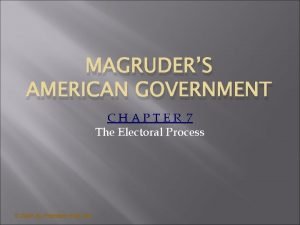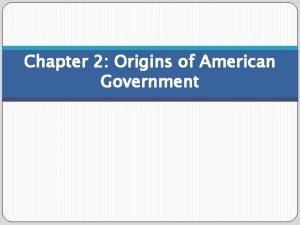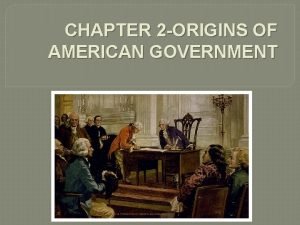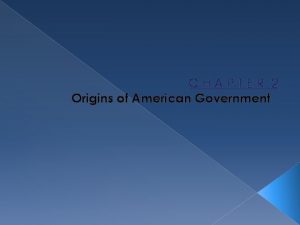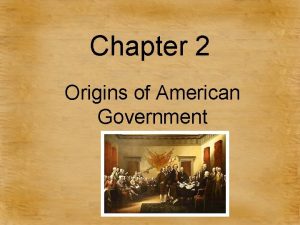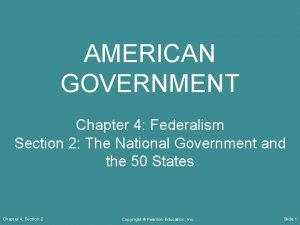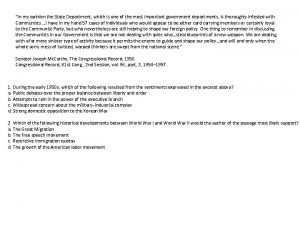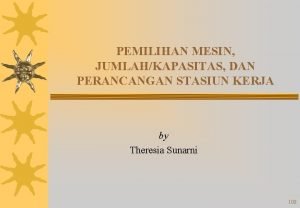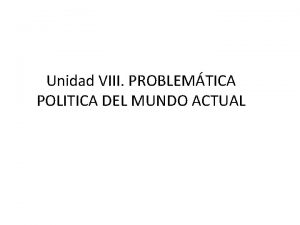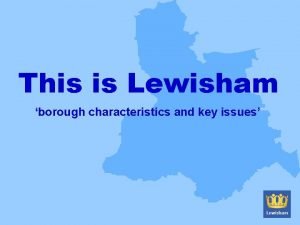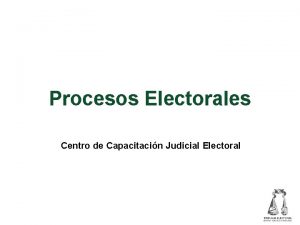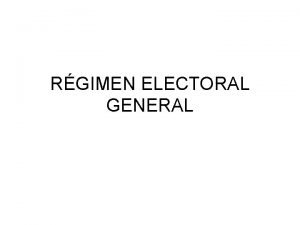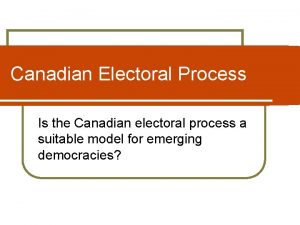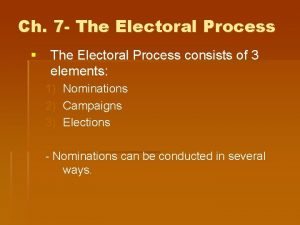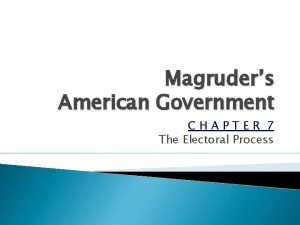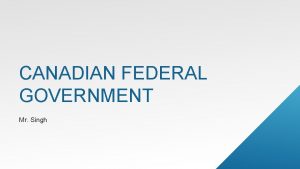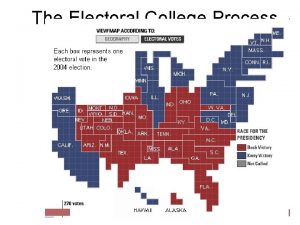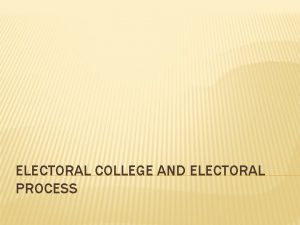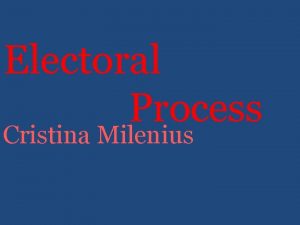AMERICAN GOVERNMENT Chapter 7 The Electoral Process Section















- Slides: 15

AMERICAN GOVERNMENT Chapter 7: The Electoral Process Section 3: Money & Elections

Objectives 1. Explain the issues raised by campaign spending. 2. Describe the various sources of funding for campaign spending. 3. Examine federal laws that regulate campaign finance. 4. Outline the role of the Federal Election Commission in enforcing campaign finance laws. 5. Distinguish hard money from soft money.

Campaign Spending • In 2008, presidential candidates spent some $2. 5 billion. • In September alone, Obama and Mc. Cain each spent an average of: – $25. 2 million on TV and radio ads – $4. 1 million on travel – $2 million on campaign worker salaries – $800, 000 on polls

Campaign Spending, cont. • Some $1. 5 billion was spent on House and Senate contests in 2008. • It now costs about $1 million to run for a House seat, and up to 20 times that to campaign for a Senate seat.

Sources of Funding – Most money comes from private givers, such as small contributors, wealthy individuals, political action committees (PACs), temporary fundraising groups, and candidates themselves. – Campaigns, particularly presidential campaigns, receive public funds from federal and state treasuries as well.

Sources of Funding, cont. • The Internet has become a major fundraising tool. • Barack Obama raised some $230 million via the Internet in 2008, mostly in sums of less than $100.

Sources of Funding, cont. • Candidates also raise money through telethons and fundraising dinners. • People typically give money because they believe in a party or candidate, wish to influence public policy, or want improved access to government.

Regulating Finance • Congress regulates the use of money in federal elections. It passed the most recent campaign finance law in 2002. – Federal laws require the disclosure of campaign finances, limit contributions and expenditures, and provide federal funding for presidential elections. • The Federal Election Commission often struggles to enforce campaign finance laws due to a lack of staff and funds.

Disclosure Requirements • Each candidate has a single committee responsible for all campaign spending and recording all campaign contributions. – Contributions over $200 must be identified by date, purpose, and the name of the giver. Contributions of more than $5, 000 must be reported to the FEC.

Limits on Contributions • No person can give over $2, 300 to a federal candidate in a primary or general election. • No person can give more than $5, 000 to a PAC or $28, 500 to a national party in a single year. • No person can give more than $108, 200 total in a two-year election cycle. • Before these limits were imposed in 1974, individuals often gave larger amounts.

PAC Contributions • More than 4, 000 political action committees (PACs) are active today: – Most represent special interest groups such as business associations and labor unions. They can raise money only from members. – Other PACs are unconnected committees that can raise money from the public. • No PAC can give more than $5, 000 to a candidate in a primary or general election. But a PAC can give to as many candidates as it chooses and give up to $15, 000 a year to a political party.

Public Funding • The Presidential Election Campaign Fund, established in 1971, uses taxpayer money to help fund campaigns. – If a presidential candidate accepts public funding for the general election, his or her campaign cannot take funds from any other source and is limited in what it can spend.

Public Funding, cont. • A lack of taxpayer support and the rising cost of campaigns may doom the public funding program. • In 2008, Barack Obama became the first candidate to refuse federal funds for the general election, raising more than $300 million privately.

Hard and Soft Money • Federal law puts limits on hard money— contributions given directly to candidates. • In the 1980 s, the major parties began raising millions in unregulated soft money—funds given to parties or political organizations. • In 2000, some $500 million in soft money had been raised. This money could be spent on “issue ads” supporting or opposing certain policies.

Hard and Soft Money, cont. • Several hundred million dollars in soft money were spent during the 2008 presidential campaigns.
 Chapter 7 the electoral process
Chapter 7 the electoral process Origins of american government section 4
Origins of american government section 4 Origins of american government section 1
Origins of american government section 1 Origins of american government section 1
Origins of american government section 1 Chapter 2 american government
Chapter 2 american government Origins of american government vocabulary
Origins of american government vocabulary Chapter 2 origins of american government answer key
Chapter 2 origins of american government answer key Chapter 2 origins of american government worksheet answers
Chapter 2 origins of american government worksheet answers Chapter 2 lesson 1 government in colonial america
Chapter 2 lesson 1 government in colonial america Chapter 2 origins of american government
Chapter 2 origins of american government Chapter 4 federalism answer key
Chapter 4 federalism answer key The 1964 electoral map above illustrates the
The 1964 electoral map above illustrates the Election machine
Election machine Geografía electoral
Geografía electoral Lewisham electoral roll
Lewisham electoral roll Geografía electoral
Geografía electoral
